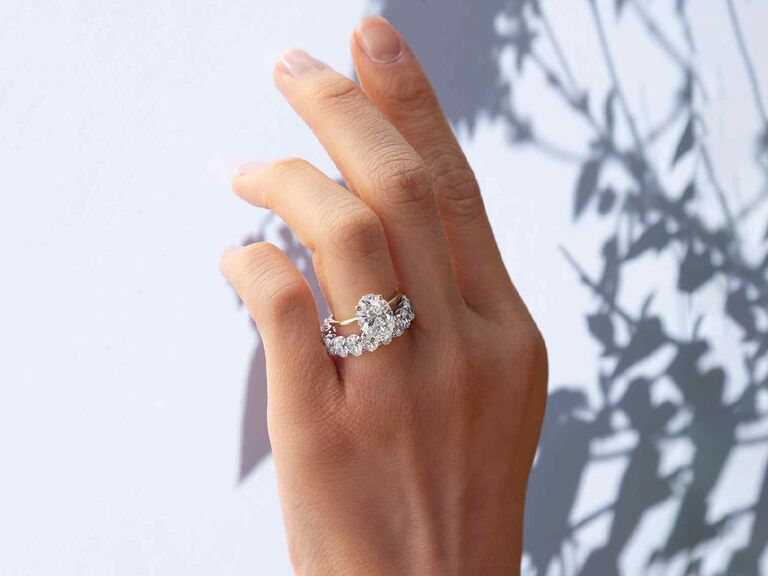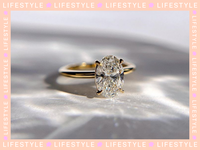An Expert Guide to Lab-Grown Diamonds
Although lab-grown diamonds have been commercially available since the 1980s, they've recently experienced a surge in popularity. These space age stones, created in labs and not mined from the surface of the earth, have disrupted the way jewelers and consumers approach diamonds and diamond engagement rings. What's all of the bling buzz about? A new method of creating what was once a rare gem has made buying diamonds more accessible to cost-conscious couples looking for a less expensive—and potentially more eco-friendly and ethical—alternative to mined diamonds.
While there are more lab-grown diamonds out there than ever before, the topic remains shrouded in mystery. If you're in the market for one of these trendy diamonds, you might be wondering how they're made, why they're popular and what sets them apart from natural diamonds. We tapped the experts to answer those questions—and probably a few you haven't thought of. Read on for everything you need to know about lab-grown versus natural diamonds.
In this article:
- What is a lab-grown diamond?
- Are lab-created diamonds real?
- Lab-Grown vs. Natural Diamonds
- How are lab-grown diamonds made?
- How are lab-grown diamonds certified and graded?
- What are the benefits of man-made diamonds?
- Are lab-grown diamonds cheaper?
- Are lab-made diamonds more eco-friendly than earth-mined diamonds?
- Do lab diamonds test as real diamonds?
What is a lab-grown diamond?
A lab grown diamond is just that—a diamond. Advanced technology allows scientists to mimic the exact conditions beneath the earth's crust where diamonds form, to create stones that are identical to what you find in nature. "A lab grown diamond is a diamond that was made to crystallize and grow in a modern laboratory, rather than forming deep in the earth more than a billion years ago, " says Steve Rees GG., Executive Lab Director at International Gemological Institute (IGI). "Once grown, they are polished with the same tools and brought to market in the same manner as natural diamonds."
Are lab-created diamonds real?
Yes, lab-grown diamonds are real diamonds. "Lab-grown diamonds are chemically, visually, and physically identical to mined diamonds," says Janie Marshall, Head of Brand at Clean Origin. So why the confusion about the authenticity of lab-created diamonds? According to Marshall, many people automatically believe that a diamond made in a lab is a fake diamond, but no such distinction actually exists. "Lab-created diamonds are made of the same DNA and carbon as mined diamonds," says Joshua Sherman, Director of Marketing & Branding at Grown Brilliance. "They're as durable and dazzling as diamonds that are mined from the earth." Pro tip: Lab-created diamonds should not be confused with diamond alternatives like moissanite, white sapphire or cubic zirconia, which mimic the look of a colorless gemstone, but are completely chemically different from lab-grown and natural diamonds.
Lab-Grown vs. Natural Diamonds
As we've established, although they are man-made stones, lab-grown diamonds (sometimes deceptively labeled "synthetic diamonds") are the real deal. While they are created by scientists, lab-grown diamonds are made from the same pure, crystallized carbon, as natural diamonds, possess the same ability to disperse light of different colors (read: give off that gorgeous sparkle), are extremely durable and come in the same shapes and sizes. "In fact, lab grown and natural diamonds are the only two things on earth which share Mohs 10 hardness; the highest hardness rating, reserved exclusively for diamonds," Rees says.
Lab-grown diamonds and natural diamonds do differ in a few ways: Lab-grown diamonds are created in a lab and not mined from the earth. Some natural diamonds may contain tiny amounts of nitrogen, while lab-grown diamonds do not.
Another major difference between lab-grown and mined diamonds? The cost. While the exact price of any lab-grown diamond depends on the quality and size of the stone you choose, they are generally less expensive than mined diamonds. Since lab-grown diamonds have a lower resale value and take considerably less time and manpower to create, the experts estimate lab-grown diamonds can cost anywhere from 20% to 50% less than mined diamonds.
How are lab-grown diamonds made?
There are two ways to create a lab-grown diamond: The first is Chemical Vapor Deposition ( CVD). According to Sherman, a tiny "seed" diamond is heated to a high temperature inside a tightly closed chamber. The chamber is then filled with a carbon-rich gas mixture and starts multiple chemical processes, making it possible for pure carbon to adhere to the diamond seed. In the end, you get a real diamond, with a process of a couple of months instead of a million years.
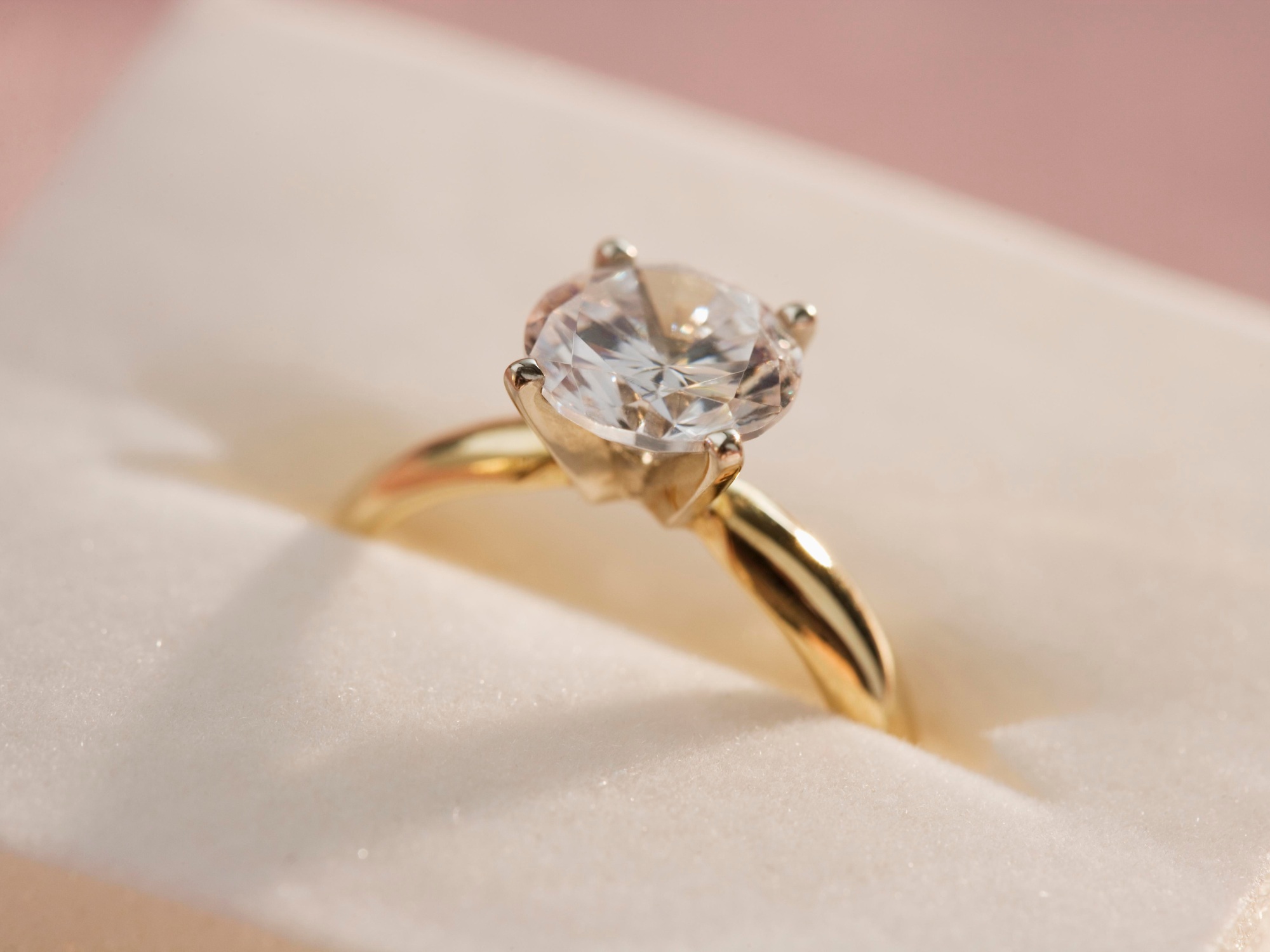
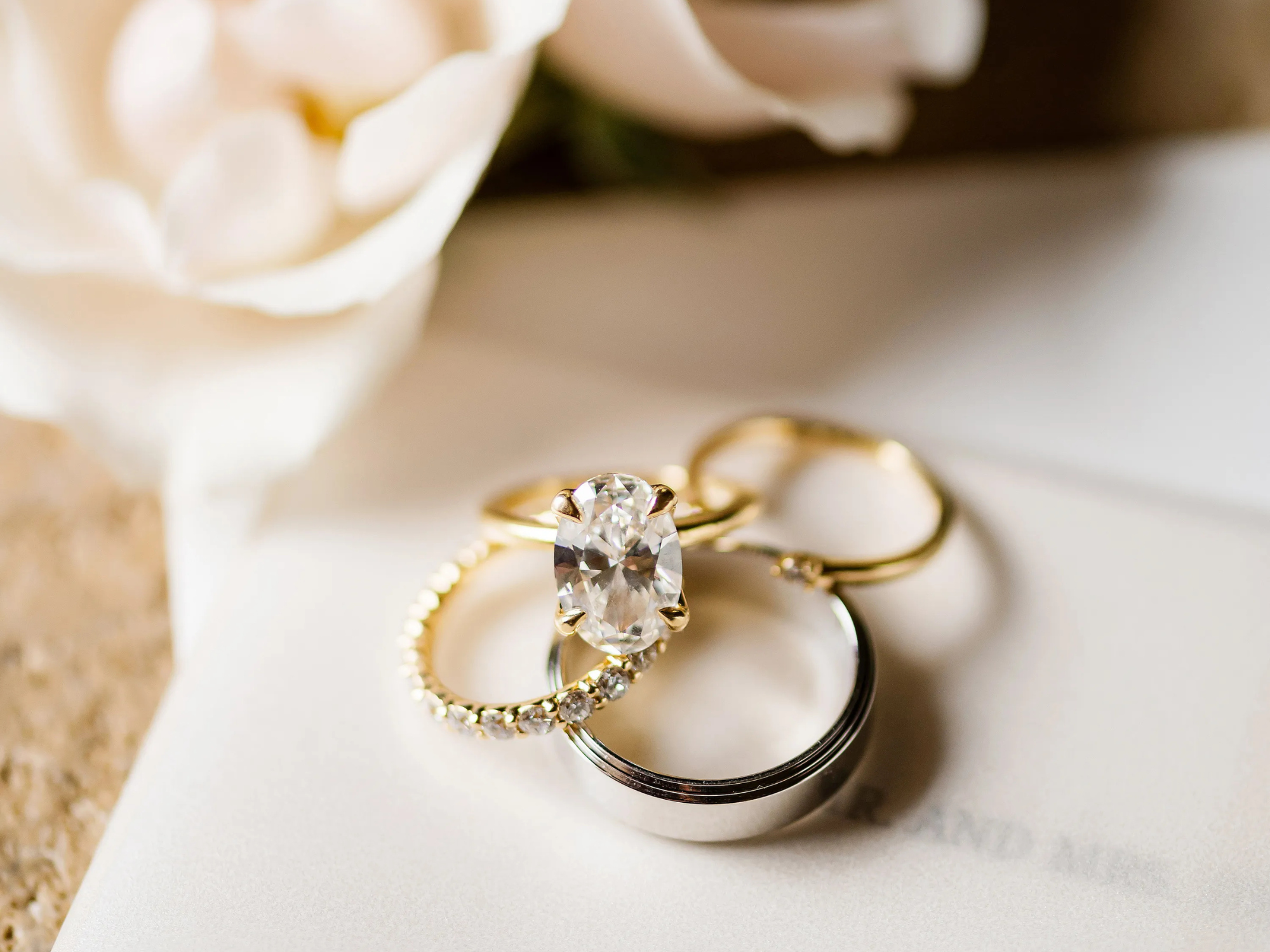
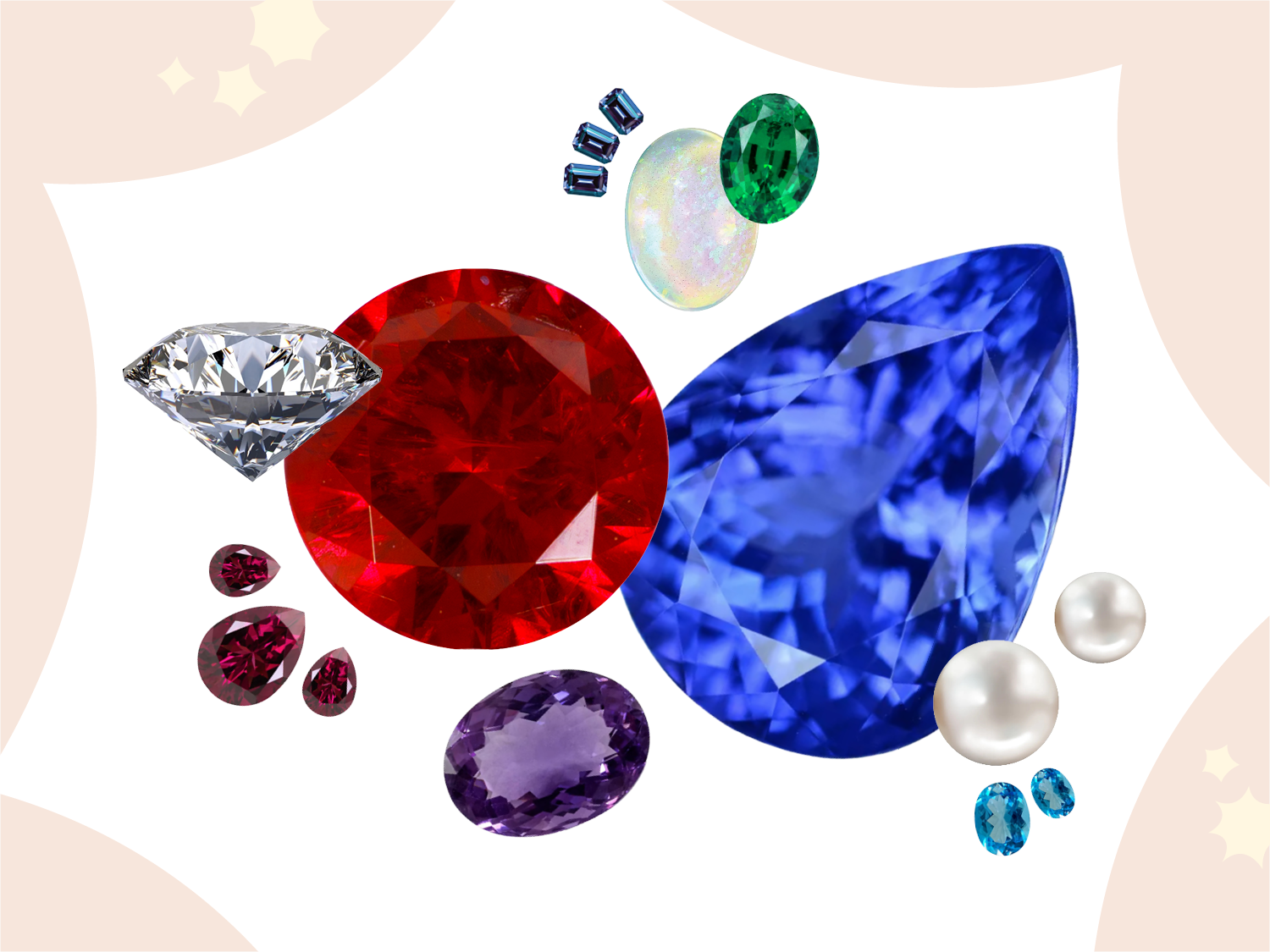
The second method is High Temperature, High Pressure (HTHP), which involves large presses that can weigh hundreds of tons to produce extremely high pressure at extremely high temperatures that turn a diamond "seed" into a fully-formed, lab-grown diamond. "The HTHP process is different, but is also a way of simulating the earth's natural process of forming mineral diamonds," Sherman says.
Once created, jewelers cut and polish lab-grown diamonds as they would with a natural diamond. "Just like with mined diamonds, the result of this process is a rough stone and it must be subject to highly skilled labor and imaging to optimize how to cut the rough diamond into a variety of shapes," says Nicole Fraenkel, Co-founder and CEO of Or & Elle.
A huge benefit of these two methods: While natural diamonds can take around 3.3 billion years to form and then must be extracted from deep in the earth, a lab-grown diamond can be created in as little as two weeks.
How are lab-grown diamonds certified and graded?
Also referred to as diamond grading, diamond certification is a system that evaluates the quality of a diamond based on the 4Cs—carat, color, clarity, and cut. It's important to buy a certified diamond so you know exactly what you're paying for and can compare the price of your stone with similarly graded diamonds. Lab-grown diamonds are certified and graded by the same third-party rating agencies ( GIA, IGI, HRD) that natural diamonds are. "Each lab-grown diamond has its own unique fingerprint, and very few are gem-grade, just like with mined diamonds," says Fraenkel. "Fewer still are colorless (DEF grade) and without macroscopic inclusions (IF-VVS clarity). Lab grown diamonds come with the same types of certificates as their mined counterparts."
IGI was the first gemological institute to accept and grade lab grown diamonds, starting back in 2005. According to Rees, IGI's lab-grown diamond certificates differ from ones for natural diamonds in a few ways. "We identify the growth method used. And, in the interest of clear delineation for consumers, we use a different colored report cover, and always laser-inscribe 'lab grown' on the stone's girdle," he says.
What are the benefits of man-made diamonds?
Lab-grown diamonds have certainly disrupted the traditional diamond industry for three big reasons: Their lower cost means you can get more bling for your buck, they're less environmentally destructive and require less labor to produce than natural diamonds. "The manufacturing of lab-grown diamonds uses exponentially less water, energy, carbon emissions, land and earth mineral disturbance than mined diamonds, as well as eliminates ethical labor concerns reported through mining practices," says Marshall. While it's rare that natural diamonds are conflict diamonds (also called blood diamonds) in this day and age, purchasing a lab-created diamond gives you 100% certainty that your stone was ethically sourced. "Lab-grown diamonds provide an important outlet for diamond purchasers and investors to enjoy the luxury of diamonds in a way that is sustainable—both from the human and environmental perspective," Fraenkel says.
Are lab-grown diamonds cheaper?
Yes. Since their production and supply are controlled by man and they don't take millions of years to grow, lab-grown diamonds are anywhere from 30% to 50% less expensive than mined diamonds.
Are lab-made diamonds more eco-friendly than earth-mined diamonds?
The short answer is yes—with some caveats. Considering the destruction that diamond mining causes to the earth, lab-grown diamonds are relatively eco-friendly and definitely conflict-free. However, the vast majority of lab grown diamond productions are not eco-friendly or sustainable. Growing them requires enormous energy to drive presses and reactors, and most are produced by burning of fossil fuels. A small number of growers have focused on becoming eco-friendly, turning to solar, hydroelectric and wind power. Those growers frequently offer a "sustainability certification" through a third party auditor. The bottom line: Any vendor that claims to be eco-friendly should have proof.
Do lab diamonds test as real diamonds?
Yes. Diamonds created in a laboratory have the same thermal and electrical conductivity as mined diamonds. As a result, they will pass the diamond tester exam the same as natural diamonds.
